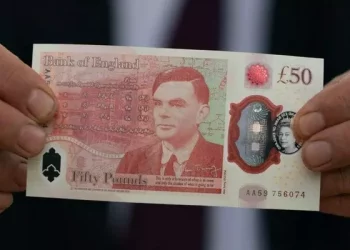In the vast and complex world of international finance, currency exchange rates play a pivotal role. Among the numerous exchange rates that are constantly monitored and analyzed, the USD/Indian Rupee rate holds significant importance. This rate determines the value of the United States dollar in terms of the Indian rupee and vice versa. It impacts a wide range of economic activities, from international trade between the two countries to investment flows and tourism. Understanding what influences this exchange rate is crucial for businesses, investors, and even individuals who may be involved in cross – border transactions.
The United States dollar (USD) is the world’s primary reserve currency. It is used in international trade, financial transactions, and is held by central banks around the globe as a store of value. The Federal Reserve, the central bank of the United States, is responsible for its monetary policy. The Fed‘s decisions regarding interest rates, money supply, and economic stimulus measures have far – reaching effects on the value of the dollar not only within the US but also in the international currency markets.
Factors Affecting the USD/INR Exchange Rate
Economic Indicators
A country’s Gross Domestic Product (GDP) growth is a fundamental indicator of its economic health. When the US economy experiences robust GDP growth, it often leads to an increase in the value of the dollar. This is because higher economic growth can attract foreign investment as investors seek to benefit from the expanding business opportunities. For example, if US companies are reporting strong earnings due to increased economic activity, foreign investors may want to invest in US stocks or bonds, which requires them to buy dollars.
On the other hand, in India, a higher GDP growth rate can strengthen the rupee. A growing Indian economy means more business opportunities, increased exports, and potentially higher returns on investment. This can attract foreign capital into India, leading to an increased demand for the rupee. However, if the growth rate in India lags behind that of the US, it can put downward pressure on the rupee against the dollar.
Inflation Rates
Inflation is another crucial factor. In the US, if the inflation rate rises significantly, the Federal Reserve may respond by increasing interest rates. Higher interest rates make US – denominated assets more attractive to foreign investors as they can earn a higher return. This increased demand for US assets leads to an increased demand for the dollar, causing it to appreciate.
In India, high inflation can have the opposite effect on the rupee. If the inflation rate in India is much higher than in the US, the purchasing power of the rupee erodes. This makes Indian goods and services relatively more expensive compared to those from the US. As a result, there may be a decrease in demand for Indian exports, and at the same time, an increase in demand for imports from the US. This trade imbalance can lead to a depreciation of the rupee against the dollar.
Interest Rates
US Interest Rates
The Federal Reserve’s decisions on interest rates have a major impact on the USD/INR exchange rate. When the Fed raises interest rates, it makes US – based investments more appealing. For instance, if the interest rate on US Treasury bonds increases, foreign investors will be more inclined to invest in these bonds. To do so, they need to buy dollars, which drives up the demand for the dollar and thus its value. As a result, the dollar appreciates against the rupee. Conversely, when the Fed lowers interest rates, US – based investments become less attractive. This may lead to a decrease in the demand for the dollar as investors look for higher – yielding opportunities elsewhere. In such a scenario, the dollar may depreciate against the rupee.
Indian Interest Rates
The Reserve Bank of India’s interest rate policies also play a significant role. If the RBI raises interest rates, it can attract foreign investment into India. Higher interest rates in India mean that investors can earn a better return on their investments in Indian financial instruments such as bonds. This increased foreign investment leads to an increased demand for the rupee, causing it to appreciate against the dollar. However, if the RBI lowers interest rates to stimulate the domestic economy, it may lead to a decrease in the attractiveness of Indian investments for foreign investors. This can result in a decrease in the demand for the rupee and potentially a depreciation of the rupee against the dollar.
Trade Balance
US – India Trade
The trade balance between the US and India has a direct impact on the USD/INR exchange rate. If the US exports more goods and services to India than it imports, it has a trade surplus with India. In this case, there is a relatively higher demand for the dollar as Indian importers need to buy dollars to pay for the US goods and services they are purchasing. This increased demand for the dollar causes it to appreciate against the rupee.
Conversely, if India exports more to the US than it imports, India has a trade surplus with the US. This means that US importers need to buy rupees to pay for Indian goods and services. The increased demand for the rupee leads to its appreciation against the dollar. In recent years, India has been working to increase its exports to the US in sectors such as information technology services, pharmaceuticals, and textiles, which can have a positive impact on the rupee’s value.
Political Stability
US Political Landscape
Political stability in the United States is crucial for the value of the dollar. A stable political environment gives investors confidence in the US economy. For example, during a smooth transition of power or when there is a clear and consistent economic policy framework, investors are more likely to invest in the US. This stability helps maintain the demand for the dollar.
On the other hand, political turmoil such as a government shutdown, a controversial election, or major policy uncertainties can lead to a decrease in investor confidence. In such situations, investors may seek safer havens for their money, which can cause the dollar to depreciate. Any political events in the US that are perceived to have a negative impact on the economy can also affect the USD/INR exchange rate.
Indian Political Scenario
In India, political stability is equally important for the rupee. A stable government that can implement consistent economic policies is likely to attract foreign investment. When the government is able to push through reforms related to trade, investment, and infrastructure development, it can boost the confidence of foreign investors. This, in turn, leads to an increased demand for the rupee. However, political unrest, coalition – related issues, or sudden policy changes can create uncertainty. For instance, if there are protests against major economic reforms or if there is political infighting within the ruling coalition, it can lead to a decrease in foreign investment and a depreciation of the rupee.
Conclusion
The USD/INR exchange rate is a complex phenomenon influenced by a multitude of factors. Economic indicators such as GDP growth, inflation, and interest rates in both the US and India play a fundamental role. The trade balance between the two countries, political stability, and capital flows in the form of FDI and portfolio investment also have a significant impact. Historical trends have shown the volatility of this exchange rate, and the future outlook remains uncertain, depending on economic projections and global economic and geopolitical factors.
For businesses engaged in trade between the US and India, understanding these factors is essential for managing currency risk. Investors looking to invest in either country need to closely monitor the exchange rate movements. Central banks in both countries also play a role in trying to manage and stabilize their respective currencies. In the ever – changing world of international finance, the USD/INR exchange rate will continue to be a key metric to watch for all those involved in cross – border economic activities.
Related topics



























